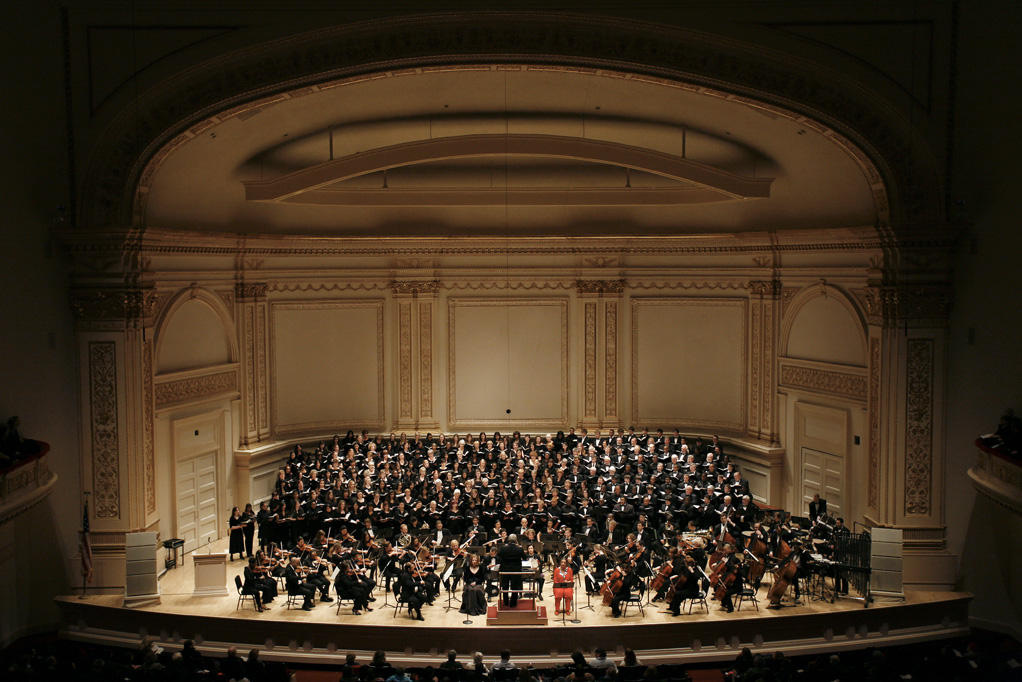Concert for Peace – Celebrating the Spirit of Martin Luther King, Jr. (DCINY)
Concert for Peace – Celebrating the Spirit of Martin Luther King, Jr. Distinguished Concerts International New York in Review (DCINY) Carnegie Hall, New York, NY January 17, 2011
Distinguished Concerts International New York, or DCINY, as the group calls itself, rounds up choruses from around the world, brings them to New York and presents them in concerts mostly composed of recently written but highly accessible music. The concert on January 17 was dedicated entirely to the music of DCNY’s composer-in-residence, Karl Jenkins. Originally from Wales, Mr. Jenkins is, according to his website, the most frequently performed living composer in the world. His style is tonal and presents a fusion of classical, ethnic, and popular music. The music often sounds like the best of movie music; indeed Mr. Jenkins has achieved great success as a composer of both television commercials and film scores. Although his music is sometimes too repetitious for my taste, it is often rousing and at times quite beautiful.
The two works presented on this concert were Mr. Jenkins’ “Gloria” and “Stabat Mater.” The first piece was a U.S. premiere. The major part of its text was taken from the Gloria of the Latin Mass. Interspersed were readings from other religions: the Bhagavad Gita, (Hindu), the Diamond Sutra, (Buddhism), the Tao Te Ching (Taoism), and the Qur’an (Islam). The choruses were the Kings Chorale from Canada, the Laramie County Community College Choir from Wyoming, the Methodist College Chapel Choir from Ireland, the Ottawa University Concert Choir, and the Sno-King Community Chorale from Washington. Charlotte Daw Paulsen was the mezzo-soprano soloist and DCNY’s Artistic Director, Jonathan Griffith conducted. The orchestra was drawn from local players. The choruses sang with assurance and beauty of tone, although from where I was sitting they were at times not as loud as might have been wished. Ms. Paulsen has a lovely voice but was similarly under-powered. The exemplary conducting of Jonathan Griffith cannot be faulted.
The second half of the program, almost twice as long as the first half, was a performance of Mr. Jenkins’ “Stabat Mater,” written in 2008. This work employs ancient instruments and modes from the Middle East alongside the standard Western harmonies and instrumentation. As he did in the first half’s “Gloria,” Mr. Jenkins interpolated six movements in other languages which strikingly contrasted with the Latin of the standard “Stabat Mater” text. One of these movements, “And the Mother did weep” was, for me, the high point of the concert. This lovely, haunting piece for chorus and orchestra was full of surprising and enchanting twists and turns of melody and harmony. I hope I have the chance to hear it again. In other interpolated movements, there is also a part for “ethnic vocals,” performed by Belinda Sykes, who also played the Mey, a Middle Eastern double reed instrument. The choruses for the second half of the program were the Kirk Choir of Pasadena Presbyterian Church, from California, the Mendelssohn Choir of Connecticut, the Fairfield University Chamber Singers, the Saddleworth Musical Society from England, the Sine Nomine Singers of North Carolina, the University of Johannesburg Choir from South Africa, and the West Windsor-Plainsboro High School South Chorus from New Jersey. These groups, all well-prepared, were capable of more power than the forces on the first half, although their intonation wavered a bit during the a cappella “Fac ut portem Christi mortem.” The concert ended with a grand climax, as the choruses from the first half joined in from the balcony. The audience leapt to its feet and there was thunderous applause.
